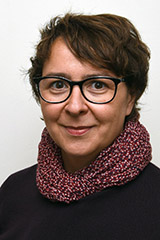
Aleksandra Lipińska, University of Cologne
Leopolis Multiplex. Art and Architecture as Instruments of Interconfessional Encounters in Early Modern Lviv
The Ukrainian city of Lviv (Ukr. Львів, Pl. Lwów, Yid. לעמבערג, Ger. Lemberg, Arm. Լվո, Rus. Львов), since the fourteenth incorporated into the Kingdom of Poland, experienced a remarkable economic and cultural heyday in the Early Modern times. Situated as a crucial transit hub connecting Western European commerce centres with trade posts at the Black Sea, Lviv attracted immigrants of diverse origin and became a melting pot of various ethnicities and denominations. Alongside the native Ruthenian Orthodox population and the politically dominant Catholic Poles, Lviv hosted a mosaic of communities, including German, Jewish, Crimean Karaite, Armenian, Greek, Italian, and Tatar residents.
Art and architecture emerged as pivotal tools in the interconfessional debates, offering a unique arena for encounters and confrontations. They shaped individual visual codes and religious identities, while fostering also a degree of a visual unification. Notably, artists and architects, many of whom were migrants themselves, played a crucial role in this dynamic, in some cases acting as intermediaries between diverse religious groups. The talk will discuss some selected instances of Lviv’s ecclesiastical architecture and its furnishing, examining them as reflection of the complex confessional status of the Ukrainian city in the sixteenth and seventeenth centuries.
Aleksandra Lipińska is a substitute Professor of Early Modern Art History at the Institute of Art History of the University of Cologne. She obtained her PhD (2003) at the University of Wrocław (Poland) and her habilitation at the TU Berlin (2021). 2005-10 she participated in an international research programme Bild und Konfession at the Geisteswissenschaftliches Zentrum für Geschichte und Kultur Ostmitteleuropas in Leipzig. 2012-2016 she was a Junior Professor of the Art History of Central and Eastern Europe at the Technical University in Berlin, and 2016-2022 Professor of the Early Modern Art History at the Ludwig-Maximilian-University in Munich. Her research interests range from Early Modern art in Northern, and Central and Eastern Europe to questions of entanglement of art and confession, artworks’ materiality, history of art history and digital art history. Next to numerous articles in peer-reviewed journals, she has edited several volumes (e.g. with J. Harasimowicz, Das Erbe der Reformation in den Fürstentümern Liegnitz und Brieg, Legnica 2007), and published the book Moving sculptures. Southern Netherlandish alabasters from the 16th to 17th centuries in Central and Northern Europe, Brill 2015. Her second monograph Alabaster. Studies in Material Meaning(s) will appear 2024 in the Brill series ‘Studies in Art and Materiality’.